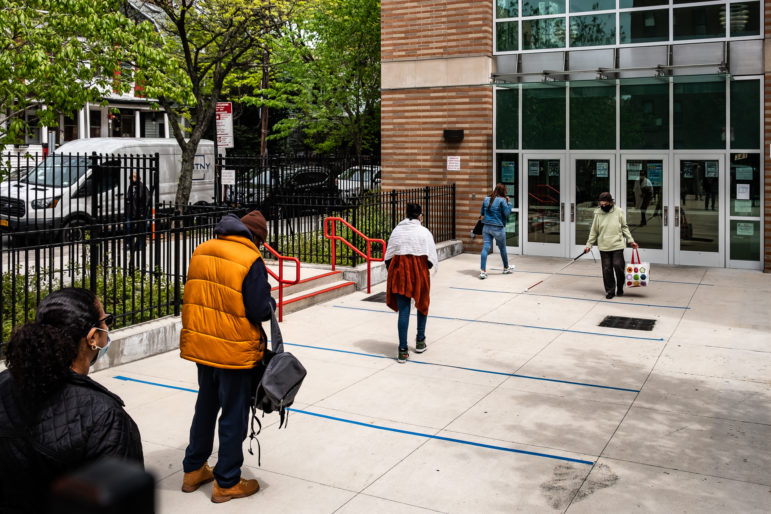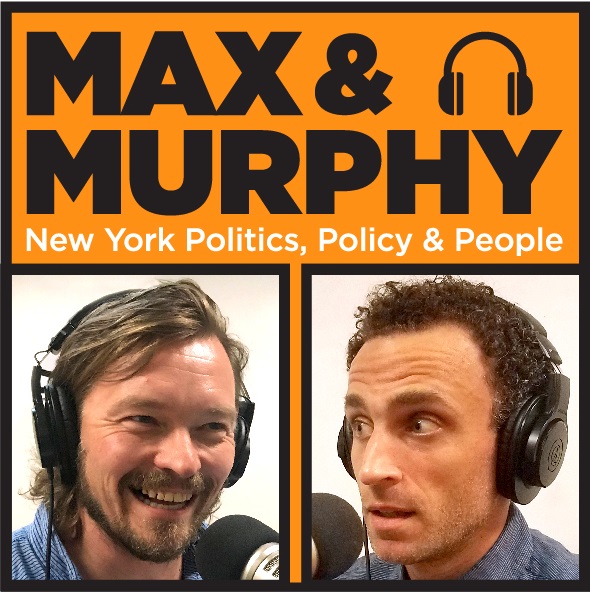A top nutrition advocate says the pandemic exacerbated a significant hunger crisis in the city. And a year later, it is still exacerbating it—although the federal stimulus package will deliver help.

Adi Talwar
Hunger and food insecurity quickly emerged as one of the most pressing problems facing New Yorkers during the pandemic. Here, residents lined up at one of the city’s free meal hubs in May.Even as the nightmare year of 2020 was ending, the number of New Yorkers seeking help to put food on their tables climbed. From December to January, 10,000 additional household joined the Supplemental Nutritional Assistance Program (SNAP) rolls, completing a 100,000-household surge over the past year.
That was in keeping with the theme of COVID-19’s impact on hunger in New York City, according to Hunger Free America CEO Joel Berg.
“Worser is not a word in English, but it should be,” Berg told WBAI’s Max & Murphy Show on Wednesday. “During the pandemic, things went from worse to worser.”
“We had a very serious hunger epidemic before the pandemic,” he continued. “In 2019 when things in the economy were theoretically hunky-dory, when unemployment at least on paper was very low, there were a million New Yorkers who couldn’t afford enough food and so what happened was, in the pandemic, hundreds of thousands of New Yorkers lost their jobs, a million kids a day who were getting some sort of school meal stopped getting them, senior centers closed and tens of thousands of meals a day they were distributing got shut down while pantries and kitchens, a relatively small part of the solution, some of them were shut down, and then food prices shot up—some because of market forces and some because of illegal price gouging.”
“And so, things went from worse to worser. People who were poor and hungry became poorer and hungrier and people who were at the edge of poverty and hunger became poor and hungry,” Berg says. In March 2021, a year after the first shutdowns began putting more people at risk of food shortages, “the situation is probably just as bad as it was. The only thing that’s really going to reduce it is this recovery bill.”
The individual relief payments and extended unemployment benefits within the recently-signed $1.9 trillion federal stimulus bill will certainly pull many households back from hunger or its brink, but the legislation also includes some $12 billion targeted directly at hunger: money to increase the value of SNAP benefits, improve state systems for enrolling recipients and continue the Pandemic Electronic Benefits Transfer (EBT) program.
The temporary relief, of course, is not designed to deal with the underlying mismatch between earnings and human needs that drove the pre-pandemic hunger crisis Berg describes. The challenge for the feds and for people seeking local office in 2021 is to figure out how to make sure things don’t just go from worser to worse.
“The real way to end hunger is to create jobs, make sure they pay a living wage, make sure health care is free, childcare and housing is affordable and there’s an adequate safety net: things like SNAP and WIC and school meals,” Berg said.
Hear our conversation below:









